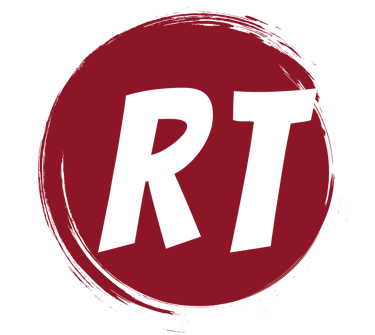Assessment Report
After completing the red team assessment, hot wash, and end mission procedures, it’s time to create the red team assessment report—also known as the security assessment report (SAR).
3/14/20253 min read


The final report represents the culmination of a red team assessment, serving as the definitive document that transforms technical findings into actionable security improvements. This critical deliverable requires careful attention to detail and clear communication to provide maximum value to stakeholders. We develop the SAR using operator logs, system logs, and information collected throughout the engagement, including the Hot Wash out-brief.
For an example SAR, refer to the template in the Resource section, which uses the fictional Global Finance Corporation as a demonstration.
Purpose and Value
A well-crafted assessment report serves as a critical cornerstone of the engagement, performing several essential functions that transform technical findings into meaningful business value. These comprehensive documents serve as the definitive record of the assessment, delivering multiple layers of vital information that stakeholders rely on for security decision-making and operational improvements:
Documents and validates the entire assessment process
Translates technical findings into business-relevant insights
Provides a roadmap for security improvements
Creates a historical record for tracking security maturity
Information Sources
The comprehensive security assessment report integrates and analyzes information gathered from diverse sources across the entire engagement period, synthesizing critical data points to present a complete picture of the assessment findings. This thorough compilation draws from various channels of intelligence gathered throughout the operation:
Detailed operator logs and observations
System and network monitoring data
Hot Wash debrief findings
Technical evidence and artifacts
Core Components
1. Executive Summary
The executive summary serves as a crucial entry point to the assessment report, providing senior stakeholders and decision-makers with a concise yet comprehensive overview of the engagement. This section distills the most important elements of the assessment into a digestible format, including:
Objectives and goals of the assessment
Strengths, positive security measures observed
Critical vulnerabilities discovered
Strategic recommendations
2. Technical Assessment Details
This section provides a detailed technical analysis of the assessment method and includes thorough documentation about:
Method and approach used
Tools and techniques employed
Detailed attack chains and paths
Evidence of successful compromises with Action Map or Event Map
3. Timeline & Attack Narrative
In-depth chronological breakdown detailing the progression of the red team assessment, including detailed documentation of methodologies employed, techniques executed, and the sequential flow of operations throughout the engagement period. This timeline captures both the tactical and strategic elements of the assessment, providing stakeholders with a clear understanding of how the engagement unfolded.
Details the methods used from initial access through end-of-assessment
Documents, specific techniques and tools employed
Analyzes both successful and failed approaches
4. Risk & Technical Findings
A three-tier risk rating system (high, medium, and low) helps prioritize issues based on their impact and severity, enabling organizations to address vulnerabilities. The technical findings section outlines security flaws and observations found during the assessment.
Severity level (High, Medium, Low) with potential impact
Findings and Observations
Description of the vulnerability and the technique exploited by the red team
Potential impact on operations
Affected systems and assets observed and/or exploited
Recommendations for implementing security controls and remediation measures
5. Conclusion
Acts as the last connection between the assessment’s technical findings and real-world operational results.
6. Supporting Evidence
Provides documentation and validation of findings through evidence collection, detailed technical artifacts, and recorded proof-of-concept demonstrations that support each identified vulnerability and security observation.
Detailed documentation of attack paths and techniques
Specific commands and tools used during testing
Steps for security teams to recreate scenarios for training and defense
Strategic insights enabling leadership to prioritize remediation and allocate security resources
Best Practices for Report Writing
1. Maintain Professional Tone
Professional tone is essential in red team assessment reports, as it establishes credibility and ensures findings are taken seriously by all stakeholders. The way information is presented can impact how the organization receives and implements recommendations.
Use clear, objective language
Avoid technical jargon when possible
Present findings without emotion
Keep recommendations constructive and actionable
2. Include Supporting Documentation
Proper documentation is crucial for capturing and communicating assessment findings. Supporting evidence helps validate discoveries, demonstrate impact, and provides context for stakeholders reviewing the report. To strengthen the report’s credibility, include the following types of documentation:
Screenshots of critical findings
Log excerpts showing exploitation
Network diagrams and attack paths
Technical evidence files
3. Consider Your Audience
When crafting security assessment reports, it’s crucial to ensure that the documentation communicates findings and recommendations across various organizational levels and roles. The report content should be structured and presented in a way that makes it accessible and valuable to multiple stakeholders:
Executive leadership requiring high-level insights
Technical teams needing detailed remediation guidance
Security managers planning implementation strategies
Compliance teams verifying security controls
Quality Assurance Checklist
Before finalizing the assessment report, it is essential to perform a quality review to verify completeness and accuracy. The following checklist should validate that the report meets all the necessary standards and requirements.
All findings are documented and evidence-backed
Technical accuracy has been peer-reviewed
Recommendations are clear and implementable
Writing is professional and free of errors
Supporting materials are referenced
Conclusion
A well-crafted red team assessment report is more than just a document—it’s a roadmap for security improvement. By following these guidelines and best practices, you can create reports that deliver real value and drive meaningful security enhancements for your clients. The effectiveness of communication of findings and recommendations in the final report determines the success of a red team assessment. Take the time to create comprehensive, clear, and actionable documentation that serves as a valuable resource for all stakeholders involved in improving the organization’s security posture.
